Discover 11 hidden attractions, cool sights, and unusual things to do in Sequoia and Kings Canyon National Parks (United States). Don't miss out on these must-see attractions: Moro Rock, Sentinel Tree, and Crystal Cave. Also, be sure to include Muir Grove in your itinerary.
Below, you can find the list of the most amazing places you should visit in Sequoia and Kings Canyon National Parks (California).
Table of Contents
Moro Rock
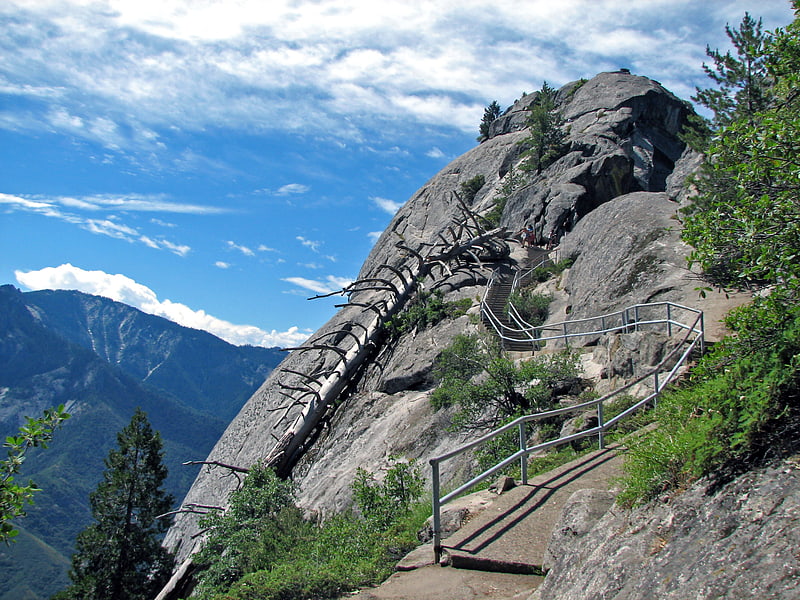
Rock formation. Moro Rock is a granite dome rock formation in Sequoia National Park, California, United States. It is located in the center of the park, at the head of Moro Creek, between Giant Forest and Crescent Meadow. A stairway, designed by the National Park Service and built in 1931, is cut into and poured onto the rock, so that visitors can hike to the top. The view from the rock encompasses much of the Park, including the Great Western Divide. Use of this trail is discouraged during thunderstorms and when it is snowing.
The name "Moro Rock" derives from a blue roan mustang of color the Mexicans call moro, owned by one Mr. Swanson of Three Rivers in the 1860s[1]
Address: Moro Rock Trail, Sequoia and Kings Canyon National Parks
Sentinel Tree
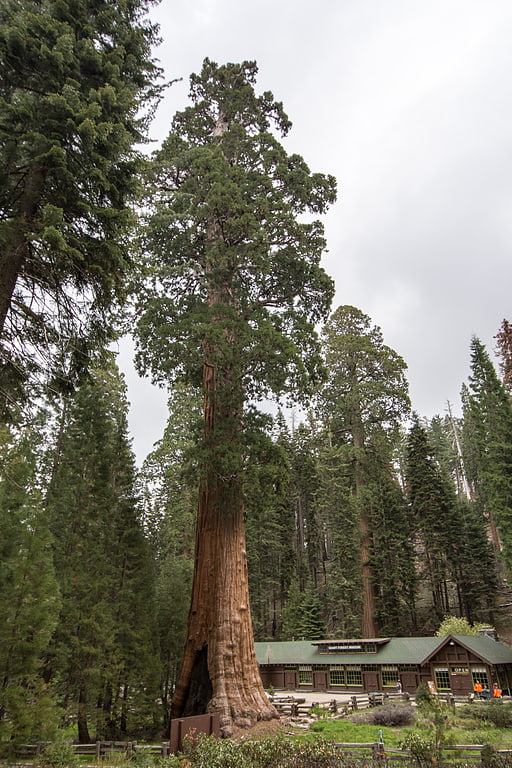
Sentinel is a giant sequoia located within the Giant Forest Grove of Sequoia National Park, California. It is the 43rd largest giant sequoia in the world, and could be considered either the 42nd or 41st largest depending on how badly Ishi Giant and Black Mountain Beauty have atrophied following devastating wildfires in 2015 and 2017, respectively.[2]
Crystal Cave
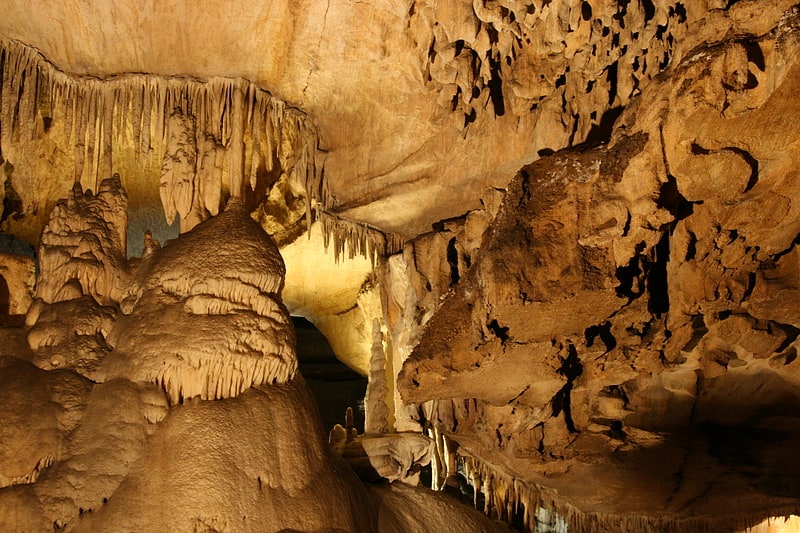
Tourist attraction in Tulare County, California. Crystal Cave is a marble karst cave within Sequoia National Park, in the western Sierra Nevada of California. It is one of at least 240 known caves in Sequoia National Park. Crystal Cave is in the Giant Forest area, between the Ash Mountain entrance of the park and the Giant Forest museum.
The cave is a constant 48 °F (9 °C). It is accessible by Park Service guided tours only. Tickets are not sold on-site, but must be bought at the Foothills or Lodgepole Visitor Center.[3]
Address: Ca-180 E, 93265 Sequoia and Kings Canyon National Parks
Muir Grove

Muir Grove is a giant sequoia grove in Sequoia National Park of the Tulare County, which covers about 215 acres. The grove, located in the northwest corner of the park, is accessed by the Muir Grove Trail which begins from the Dorst Creek Campground. Because of its relatively remote location in the park, it is significantly less visited than the more popular groves of large sequoia trees in the park. The isolated atmosphere helps keep Muir Grove untouched and preserved.[4]
President Tree

The President is a giant sequoia located in the Giant Forest of Sequoia National Park in the United States, east of Visalia, California. It is approximately 247 feet high, and 27 feet in diameter at the base. The President is the third-largest tree in the world, measured by volume of trunk, and the oldest-known living sequoia, about 3,200 years old. As of 2012, the volume of its trunk measured at about 45,000 cubic feet, with an additional 9,000 cubic feet of branches.
The tree was named after President Warren G. Harding in 1923. Nearby trees include Chief Sequoyah, the 27th-largest giant sequoia in the world, and the Congress Group, two dense stands of medium-sized sequoias that represent the "House" and "Senate".[5]
Giant Forest
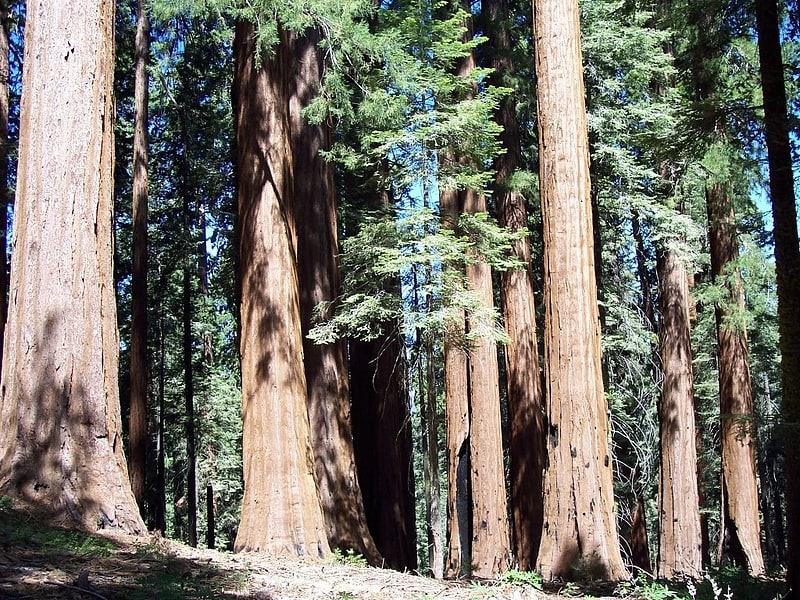
The Giant Forest, famed for its giant sequoia trees, is within the United States' Sequoia National Park. This montane forest, situated at over 6,000 ft above mean sea level in the western Sierra Nevada of California, covers an area of 1,880 acres. The Giant Forest is the most accessible of all giant sequoia groves, as it has over 40 mi of hiking trails.
Five of the ten most massive trees on Earth are located within the Giant Forest. The largest of these, named General Sherman, measures 36.5 ft (11.1 m) across the base. The giant sequoia is the world's most massive species of tree and is one of the six species documented to grow to 300 ft (91 m) in height; the others are coast redwood, yellow meranti, Eucalyptus regnans, Douglas fir, and Sitka spruce. It is also among the longest-lived of all trees in the world.[6]
Robert E. Lee Tree
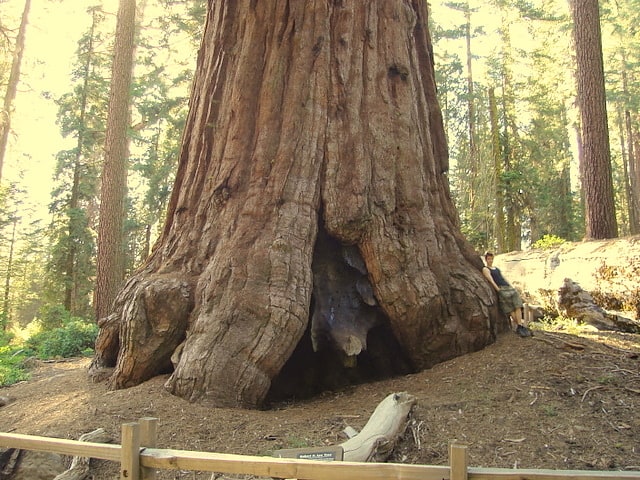
The Robert E. Lee tree is the second largest giant sequoia in the Grant Grove section of Kings Canyon National Park, and the eleventh largest giant sequoia in the world. Richard Field, a Confederate lieutenant, named this tree in honor of Robert E. Lee around 1875. In 2020, Sequoia and Kings Canyon National Parks removed references to the name in Park materials, in an effort to promote inclusiveness following the George Floyd protests, however the name cannot be changed without the approval of Congress or the National Park Service.[7]
General Grant Tree
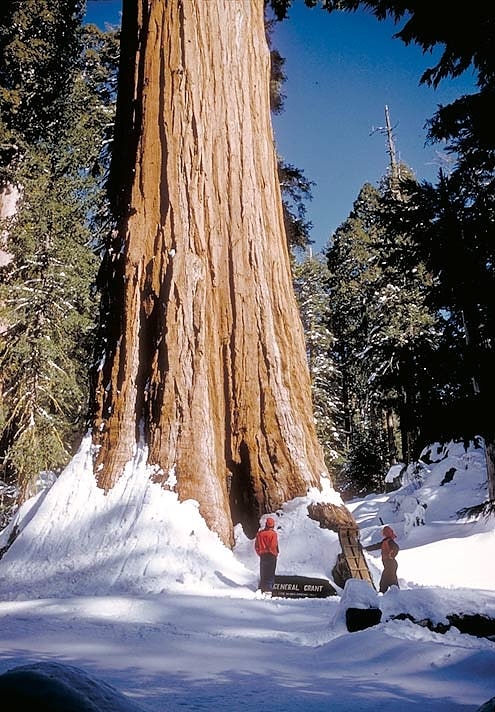
The General Grant tree is the largest giant sequoia in the General Grant Grove section of Kings Canyon National Park in California and the second largest giant sequoia tree in the world. Once thought to be well over 2,000 years old, recent estimates suggest the General Grant tree is closer to 1,650 years old. The tree also features the third largest footprint of any living giant sequoia, measuring 107.6 ft in circumference at ground level.[8]
Ash Mountain Entrance Sign
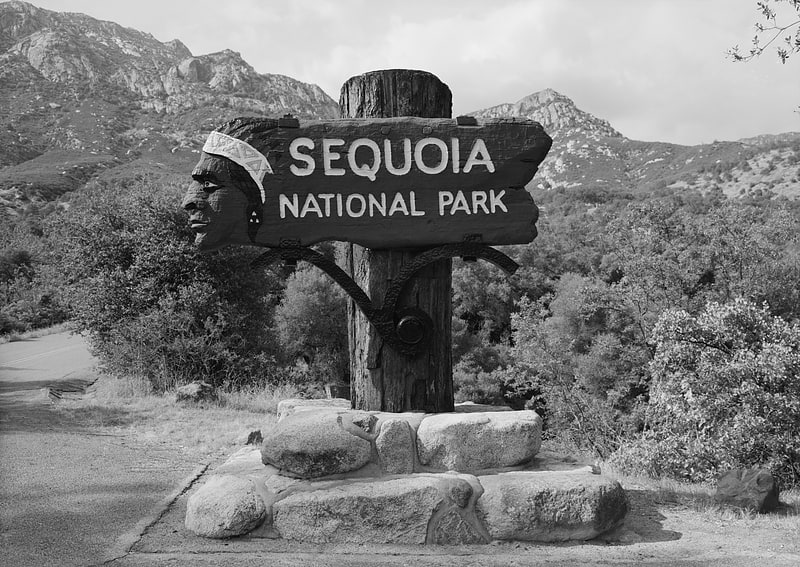
The Ash Mountain Entrance Sign at Sequoia National Park was constructed in 1935 by Civilian Conservation Corps craftsmen. Featuring a carved Native American face, the sign was made from blocks of sequoia wood and fastened with wrought iron brackets.
The design was first proposed by National Park Service architect Merel S. Sager in 1931, who designed a small log sign for the Ash Mountain entrance. In 1935 resident park landscape architect Harold G. Fowler created a much larger design. He recruited CCC worker George W. Muno, who had displayed a talent for woodworking, and they selected a piece of fallen sequoia wood from the Giant Forest. Fowler sketched the profile in blue chalk on the wood using an Indian Head nickel as a guide. Muno carved the wood over a several-month period and the sign was assembled and erected over the winter of 1935-36. It was moved in 1964 to make room for a new park entrance station.
The sign is supported by a four-foot-diameter sequoia log rising from a two-tiered masonry platform. The sign panel is ten feet wide by four feet high and one foot thick, carved into a profile reputed to signify Sequoyah, whose Cherokee tribe never inhabited California. The sign was originally unpainted, but assumed its present appearance in the 1950s. As originally built, a matching log pylon stood on the opposite side of the road. The pylon was removed when the sign was relocated.[9]
Tharp's Log

Historical landmark in Tulare County, California. Tharp's Log is a hollowed giant sequoia log at Log Meadow in the Giant Forest grove of Sequoia National Park that was used as a shelter by early pioneers. The log is named after Hale D. Tharp, who was described as the first Non-Native American to enter the Giant Forest.[10]
Redwood Mountain Grove
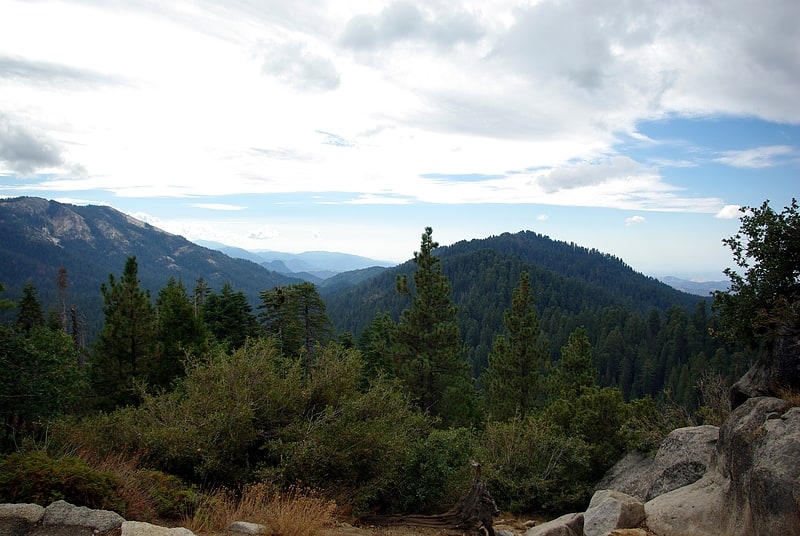
Redwood Mountain Grove is the largest grove of giant sequoia trees on earth. It is located in Kings Canyon National Park and Giant Sequoia National Monument on the western slope of California's Sierra Nevada. The grove contains the world's tallest giant sequoia. The Hart Tree and Roosevelt Tree grow in the grove and are two of the 25 largest trees by volume in the world. The largest tree is the General Sherman Tree in the Giant Forest grove to the southeast.[11]